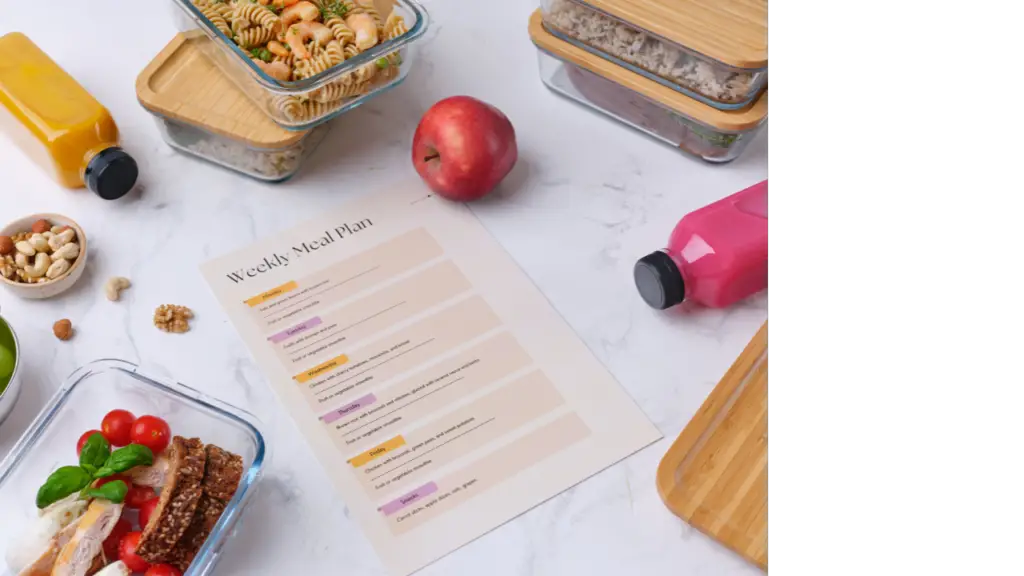Introduction: Understanding Diabetes and the Importance of Meal Planning
When it comes to managing diabetes, proper nutrition plays a crucial role in controlling blood sugar levels and reducing the risk of complications. Meal planning is an essential component of diabetes management, as it helps regulate blood glucose levels throughout the day.
Creating a Balanced Diabetes Meal Plan

Understanding Macronutrients: Carbohydrates, Proteins, and Fats
In crafting a diabetes-friendly meal plan, it’s important to pay attention to the types and amounts of macronutrients consumed. Carbohydrates, proteins, and fats all affect blood sugar levels differently.
Carbohydrates, especially those with a high glycemic index, can cause blood sugar spikes. Opt for complex carbohydrates such as whole grains, fruits, and vegetables, which are digested more slowly and have less impact on blood glucose levels.
Proteins help stabilize blood sugar levels and promote satiety. Incorporate lean sources of protein such as poultry, fish, tofu, and legumes into your meals.
Healthy fats, such as those found in nuts, seeds, avocados, and olive oil, can improve insulin sensitivity and promote heart health. However, it’s important to consume them in moderation as they are calorie-dense.
The Role of Fiber in Diabetes Management

Fiber-rich foods help regulate blood sugar levels by slowing down the absorption of glucose and promoting feelings of fullness. Aim to include plenty of fiber in your meals through sources such as fruits, vegetables, whole grains, and legumes.
Importance of Portion Control
Controlling portion sizes is essential for managing diabetes and preventing overeating. Use measuring cups, spoons, or a food scale to ensure accurate portions, and avoid oversized servings, especially of high-calorie foods.
Day 1: Breakfast Ideas for a Diabetes-Friendly Meal Plan
Kickstart your day with a nutritious breakfast that will keep your blood sugar levels stable and provide lasting energy. Here are some diabetes-friendly breakfast ideas:
- Vegetable Omelette: Fill your omelette with spinach, tomatoes, and bell peppers for a boost of fiber and vitamins.
- Greek Yogurt Parfait: Layer Greek yogurt with berries and a sprinkle of nuts for added protein and crunch.
- Whole Grain Toast with Avocado: Top whole grain toast with mashed avocado and a poached egg for a satisfying breakfast packed with healthy fats and protein.

Day 1: Lunch Options to Keep Blood Sugar Stable
For a midday meal that keeps you satisfied and supports stable blood sugar levels, try these lunch ideas:
- Quinoa Salad: Toss quinoa with mixed greens, cherry tomatoes, cucumbers, and a drizzle of balsamic vinaigrette for a light and refreshing lunch.
- Turkey and Veggie Wrap: Fill a whole grain wrap with sliced turkey, lettuce, tomatoes, and avocado for a protein-packed meal on the go.
- Grilled Chicken Caesar Salad: Top grilled chicken breast with romaine lettuce, Parmesan cheese, and a light Caesar dressing for a classic salad with a healthy twist.
Day 1: Dinner Recipes for Diabetes Management
Finish off your day with a satisfying dinner that won’t cause blood sugar spikes. Here are some dinner recipes to try:
- Baked Salmon with Roasted Vegetables: Season salmon fillets with herbs and spices, then bake until flaky. Serve with a side of roasted vegetables for a nutritious meal.
- Stir-Fried Tofu with Mixed Vegetables: Stir-fry tofu with broccoli, bell peppers, and snap peas in a flavorful sauce made with low-sodium soy sauce and ginger.
- Spaghetti Squash with Turkey Meatballs: Roast spaghetti squash until tender, then top with homemade turkey meatballs and marinara sauce for a low-carb twist on a classic dish.
Day 2-7: A Complete Weekly Meal Plan

Here’s a sample 7-day meal plan to help you get started:
Day 2
- Breakfast: Greek yogurt with berries and almonds
- Lunch: Quinoa salad with grilled chicken
- Dinner: Baked cod with steamed broccoli and brown rice
Day 3
- Breakfast: Veggie omelet with whole grain toast
- Lunch: Turkey and avocado wrap with a side salad
- Dinner: Vegetable stir-fry with tofu over cauliflower rice
Day 4
- Breakfast: Whole grain cereal with skim milk and sliced banana
- Lunch: Lentil soup with a side of mixed greens
- Dinner: Grilled shrimp skewers with roasted asparagus and quinoa
Day 5
- Breakfast: Smoothie made with spinach, berries, Greek yogurt, and almond milk
- Lunch: Chickpea salad with cucumber, tomatoes, and feta cheese
- Dinner: Chicken fajitas with bell peppers and onions, served in lettuce wraps
Day 6
- Breakfast: Whole grain pancakes topped with Greek yogurt and fresh fruit
- Lunch: Caprese salad with grilled chicken
- Dinner: Turkey chili with a side of steamed green beans
Day 7
- Breakfast: Avocado toast with a poached egg and cherry tomatoes
- Lunch: Tuna salad stuffed in a whole wheat pita with carrot sticks
- Dinner: Grilled steak with roasted sweet potatoes and sautéed spinach
Snack Ideas for Between Meals
When hunger strikes between meals, reach for one of these diabetes-friendly snacks to keep you satisfied without causing blood sugar spikes:
- Raw veggies with hummus
- Greek yogurt with a sprinkle of nuts
- Apple slices with almond butter
- Hard-boiled eggs
- Cottage cheese with berries

FAQs About Diabetes Meal Planning
Q1: Can I still enjoy my favorite foods on a diabetes meal plan?
Absolutely! With moderation and proper portion control, you can still enjoy your favorite foods while managing diabetes. Incorporate them into your meal plan occasionally and balance them with healthier options.
Q2: How often should I eat on a diabetes meal plan?
It’s recommended to eat regular meals and snacks spaced evenly throughout the day to help regulate blood sugar levels. Aim for three main meals and 2-3 snacks per day, depending on your individual needs and preferences.
Q3: Are there any foods I should avoid on a diabetes meal plan?
Foods high in refined carbohydrates, added sugars, saturated fats, and sodium should be limited or avoided as they can lead to blood sugar spikes and other health complications associated with diabetes.
Q4: Do I need to count carbohydrates on a diabetes meal plan?
Monitoring carbohydrate intake is crucial for individuals with diabetes as carbohydrates directly affect blood sugar levels. Work with a registered dietitian to determine your carbohydrate needs and learn how to accurately count carbs.
Q5: How can I make my meals more flavorful on a diabetes meal plan?
Experiment with herbs, spices, citrus zest, and vinegar to enhance the flavor of your meals without adding extra salt or sugar. Incorporate a variety of seasonings to keep your taste buds excited and satisfied.
Conclusion
Creating and following a diabetes 7 days meal plan is an integral part of managing blood sugar levels and promoting overall health and well-being. By incorporating balanced meals, snacks, and desserts, individuals with diabetes can enjoy delicious and satisfying foods while keeping their condition in check. Remember to consult with a healthcare professional or registered dietitian to tailor a meal plan that meets your specific needs and goals. With dedication and consistency, you can take control of your diabetes and lead a fulfilling life.
